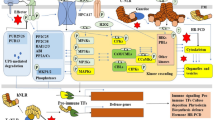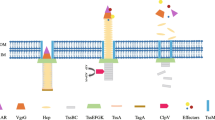Abstract
To better understand the ligand-binding mechanism of protein Pir7b, important part in detoxification of a pathogen-derived compound against Pyricularia oryzae, a 3D structure model of protein Pir7b was constructed based on the structure of the template SABP2. Three substrates were docking to this protein, two of them were proved to be active, and some critical residues are identified, which had not been confirmed by the experiments. His87 and Leu17 considered as ‘oxyanion hole’ contribute to initiating the Ser86 nucleophilic attack. Gln187 and Asp139 can form hydrogen bonds with the anilid group to maintain the active binding orientation with the substrates. The docking model can well interpret the specificity of protein Pir7b towards the anilid moiety of the substrates and provide valuable structure information about the ligand binding to protein Pir7b.

Ligand binding analysis based on the refined Pir7b model. Magenta dash line, hydrogen bond; Red dash line, distance label. (a) Docking of 2-naphthol AS-acetate to Pir7b model. A 3D figure of 2-naphthol AS-acetate-Pir7b complex is also attached (b) Docking of 2-naphthol AS-2-chlor-propionate to Pir7b model. (c) Docking of 2-naphthol-acetate to Pir7b model.










Similar content being viewed by others
References
Smith JA, Metraux JP (1991) Physiol Mol Plant Pathol 39:451–461
Reimmann C, Hofmann C, Mauch F, Dudler R (1995) Physiol Mol Plant Pathol 46:71–81
Zhang LH, Birch RG (1997) Appl Microbiol 82:448–454
Waspi U, Misteli B, Hasslacher M, Jandrositz A, Kohlwein SD, Schwab H, Dudler R (1998) Eur J Biochem 254:32–37
Nardini M, Dijkstra BW (1999) Curr Opin Struct Biol 9:732–737
Fojan P, Jonson PH, Petersen MTN, Petersen SB (2000) Biochimie 82:1033–1041
Hakulinen N, Tenkanen M, Rouvinen J (2000) J Struct Bio 132:180–190
Altschul SF, Madden TL, Schaffer AA, Zhang J, Zhang Z, Miller W, Lipman DJ (1997) Nucleic Acids Res 25:3389–3402
Forouhar F, Yang Y, Kumar D, Chen Y, Fridman E, Park SW, Chiang Y, Acton TB, Montelione GT, Pichersky E, Klessig DF, Tong L (2005) Proc Natl Acad Sci USA 102:1773–1778
Zuegg J, Gruber K, Gugganig M, Wagner UG, Kratky C (1999) Protein Sci 8:1990–2000
Kumar D, Klessig DF (2003) Proc Natl Acad Sci USA 100:16101–16106
Klessig DF, Durner J, Noad R, Navarre DA, Wendehenne D, Kumar D, Zhou JM, Shah J, Zhang S, Kachroo P, Trifa Y, Pontier D, Lam E, Silva H (2000) Proc Natl Acad Sci USA 97:8849–8855
Gruber K, Gartler G, Krammer B, Schwab H, Kratky C (2004) J Biol Chem 279:20501–20510
Raghava GPS (2000) CASP 4:75–76
Garnier J, Osguthorpe DJ, Robson B (1978) J Mol Biol 120:97–120
Zhang CT, Zhang R (2000) J Biomol Struct Dyn 17:829–842
Geourjon C, Deleage G (1995) Comput Appl Biosci 11:681–684
Han CL, Zhang W, Dong HT, Han X, Wang MJ (2006) Interferon Cytokine Res 26:441–448
Higgins DG, Bleasby AJ, Fuchs R (1992) Comput Appl Biosci 8:189–191
InsightII, Homology User Guide, SanDiego:Biosym/MSI (2000)
Hakulinen N, Tenkanen M, Rouvinen J (2000) J Struct Biol 132:180–190
Ke YY, Chen YC, Lin TH (2006) J Comput Chem 27:1556–1570
Yang H, Ahn JH, Ibrahim RK, Lee S, Lim Y (2004) J Mol Graph Model 23:77–87
Laskowski RA, Moss DS, Thornton JM (1993) J Mol Biol 231:1049–1067
Insight II Profiles-3D, MolecularSimulations Inc, San Diego (2000)
Luthy R, Bowie JU, Eisenberg D (1992) Nature 356:83–85
Sippl MJ (1993) J Comput Aided Mol Des 7:473–501
Frisch MJ, Trucks GW, Schlegel HB Gaussian 03 (Revision A.1) Gaussian Pittsburgh (2003)
Affinity San Diego Molecular Simulations Inc (2000)
Bartlett P A, Shea G.T, Telfer SJ, Waterman S (1989) R Soc Chem 182–196
Shoichet BK, Kuntz ID, Bodian DL (1992) J Comput. Chem 13:380–397
Harvey SC, McCammon JA (1987) Cambridge University Press
Simmerling C, Strockbine B, Roitberg AE (2002) J Am Chem Soc 124:11258–11259
Hornak V, Okur A, Rizzo R, Simmerling C (2006) Proc Nat Acad Sci USA 103:915–920
Case DA, Cheatham TE, Darden T, Gohlke H, Luo R, Merz KM, Onufriev A, Simmerling C, Wang B, Woods RJ (2005) J Comput Chem 26:1668–1688
Ponder JW, Case DA (2003) Adv Prot Chem 66:27–85
Pratt LR, Hummer G., Melville Ed (1999) American Institute of Physics, Melville, New York pp. 104–113
Kabsch W, Sander C (1983) Biopolymers 22:2577–2637
Baudouin E, Charpenteau M, Roby D, Marco Y, Ranjeva R, Ranty B (1997) Eur J Biochem 248:700–706
Acknowledgements
This work was supported by the National Science Foundation of China (20333050, 20673044), Doctor Foundation by the Ministry of Education, Foundation for University Key Teacher by the Ministry of Education, Key subject of Science and Technology by the Ministry of Education of China, and Key subject of Science and Technology by Jilin Province.
Author information
Authors and Affiliations
Corresponding author
Rights and permissions
About this article
Cite this article
Luo, Q., Han, WW., Zhou, YH. et al. The 3D structure of the defense-related rice protein Pir7b predicted by homology modeling and ligand binding studies. J Mol Model 14, 559–569 (2008). https://doi.org/10.1007/s00894-008-0310-3
Received:
Accepted:
Published:
Issue Date:
DOI: https://doi.org/10.1007/s00894-008-0310-3




